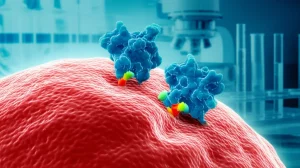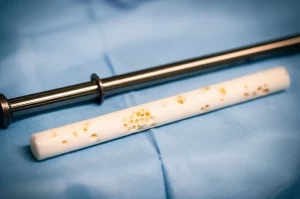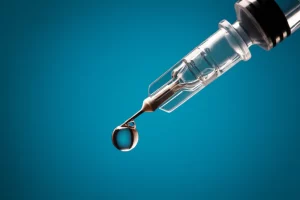Bracing for Success: How Rigid Braces and Exercises Tackle Teen Scoliosis
Hey there! Let’s Talk About Scoliosis
You know, sometimes life throws a curveball, and for some teenagers, that curveball is quite literal – it’s called Adolescent Idiopathic Scoliosis, or AIS for short. It’s basically a sideways curve in the spine that shows up during those fast-growing teen years. It’s pretty common, affecting about 90% of all idiopathic scoliosis cases. While a small curve might not be a big deal, a bigger one (we’re talking over 50 degrees) can lead to things like back pain, discomfort, and even make it harder to catch your breath when you’re active. Plus, let’s be real, dealing with a visible spinal curve can really mess with a teen’s self-image and how they feel about themselves.
The tricky part? We still don’t know exactly *why* it happens. But we do know that if a curve gets too big and keeps getting worse, especially as a teen grows, surgery might be needed to fix it. Surgery is a big deal, with its own risks and recovery time, so doctors and families often look for ways to avoid it if possible.
Conservative Treatment: The Non-Surgical Route
So, what’s the plan if surgery isn’t the first choice? That’s where conservative treatment comes in. This approach is usually recommended for teens who are still growing and have curves between 20 and 40 degrees. The goal is to stop the curve from getting worse and hopefully skip the surgery altogether.
Conservative treatment isn’t just one thing; it’s often a mix. There are specific exercises designed for scoliosis (like Schroth, SEAS, and others) and, importantly, rigid corrective braces. Think of the brace as a sort of external support system, trying to gently guide the spine back towards a straighter path while the body is still growing. Wearing a brace, often for many hours a day, combined with targeted exercises, is the most common non-surgical strategy out there.

Diving into a Specific Study: Chêneau Brace and SEAS
I recently looked into a study that really digs into the effectiveness of one specific type of rigid brace, the Chêneau brace, when used along with a particular exercise program called SEAS (Scientific Exercise Approach to Scoliosis). This study, done in Kazakhstan, followed 119 teenagers with AIS who fit the bill – curves between 20° and 40° and still had some growing left (Risser grade 0–2).
The treatment plan was pretty straightforward: wear the Chêneau brace for at least 22 hours a day (that’s a lot, I know!) and do SEAS exercises regularly. They had supervised sessions and were expected to keep up with exercises at home too, aiming for at least 5 days a week.
The researchers wanted to see if this combo actually worked to stop the curve from getting worse. They measured the Cobb angle (that’s the standard way to measure the curve) before treatment, while wearing the brace, and after treatment ended. They also checked in with the patients using questionnaires like the SRS-22r and PedsQL to see how they felt about their treatment and quality of life.
The Nitty-Gritty: What Did They Find?
Okay, here’s the exciting part. This study found that the Chêneau brace combined with SEAS exercises was pretty darn effective! Out of the 119 patients, a whopping 99 of them (that’s 83.2%) had successful treatment, meaning their curve didn’t get significantly worse (defined as an increase of more than 5°). Only a small number, just six patients (5.1%), saw their curve increase past 45°, which is often the point where surgery becomes more likely.
It didn’t seem to matter much where the curve was located in the spine; the treatment worked well across different curve types (thoracic, thoracolumbar, lumbar, and combined S-curves). They even saw improvements in the Cobb angles on average across all groups during the treatment period.

Why Adherence is the Real MVP
Now, this is super important. The study really highlighted that *sticking to the plan* makes a massive difference. Patients were assessed on how well they followed the recommendations for brace wear time and doing their SEAS exercises. They were categorized into groups based on their adherence (strict, partial, or poor).
Guess what? In the group that followed the recommendations strictly (wearing the brace for 90-100% of the time and doing exercises 5+ days a week), *zero* patients had their curve get worse! Compare that to the overall group where 16.8% saw progression, and the group with partial or poor adherence where a significant 28% saw their curve increase by more than 5°. Three patients in the low-adherence group even reached that 45° threshold.
This really drives home the point that while the brace and exercises are powerful tools, they only work best if you use them as prescribed. It takes commitment from the teen and support from their family and care team.
Beyond the Curve: How Patients Felt
It’s not just about the numbers on an X-ray, right? How the treatment affects a teenager’s life is huge. The study used those questionnaires I mentioned. The SRS-22r looks at things like functionality, pain, self-image, mental health, and satisfaction with treatment. The PedsQL measures overall quality of life.
While there wasn’t a big change in quality of life *during* brace wear compared to before, patients reported significantly better quality of life *after* the brace treatment ended. And the SRS-22r results showed improvements in functionality, self-image, and mental health post-treatment. Patients reported a high level of satisfaction with their treatment experience overall. This tells us that despite the challenges of wearing a brace, the positive outcomes in terms of spinal stability and avoiding surgery translated into them feeling better about themselves and their lives once treatment was complete.

Adverse effects were pretty minimal, mostly just skin issues where the brace touched the body, reported by about 8% of patients.
Who’s Most Likely to Succeed?
The study also looked at what factors seemed to predict who would have the most success with the Chêneau brace and SEAS combo. They found several things that increased the chances of a good outcome:
- Having a single main curve rather than a double S-curve.
- A smaller Cobb angle at the start of treatment.
- Seeing a good reduction in the curve on the first X-ray taken while wearing the brace.
- Having a higher Risser grade (meaning more skeletal maturity, but still in the Risser 0-2 range for eligibility).
- Having closed triradiate cartilage (another sign of skeletal maturity).
- Being post-menarche (for girls).
- Good adherence to the therapy plan (brace wear time and exercises).
- Longer treatment duration (in months).
Interestingly, whether or not scoliosis ran in the family also seemed to play a role.
Putting It All Together
So, what’s the takeaway from this study? It strongly supports the idea that conservative treatment for AIS using rigid braces like the Chêneau brace, *especially* when combined with specific exercises like SEAS, is a highly effective way to prevent the curve from getting worse and potentially avoid surgery.
The study had a really high success rate (83.2%), which is even better than some other studies out there. And the message about adherence is crystal clear: the more consistently you wear the brace and do the exercises, the better your chances of success.
While the study had some limitations (like not using sensors to track brace wear time precisely), its findings reinforce what many specialists believe: this combined approach works, and patient commitment is key. It’s about giving teens the best possible chance to manage their scoliosis during those crucial growth years, helping them maintain spinal health and feel good about themselves.
Source: Springer







